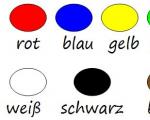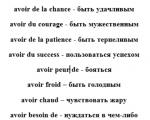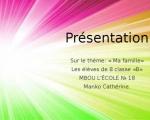Favorite images of childhood. Journey into the world of the Three Musketeers book with illustrator I
The Three Musketeers was my favorite book as a child. My friends and I literally lived in 17th century France. I think there were many like us, because every now and then I find memories of my “musketeer” childhood in various diaries. We adored everything that was somehow connected with the Musketeers. And, of course, they compared the illustrations in their well-read books. Yes, everyone had their own book with illustrations by different authors. Now I read that the best illustrator of the "Three Musketeers" is the Frenchman Maurice Leloir. But for me personally, and I think for many of my peers, the best illustrations of our childhood will remain, which he gave us Ivan Sergeevich Kuskov.I will post illustrations by I.S. Kuskov for various editions of The Three Musketeers - 1974, 1976 and 1990.
Illustration from the flyleaf of The Three Musketeers, 1974 edition
Here is what I found about the artist: Ivan Sergeevich Kuskov is a well-known book graphic artist, the author of illustrations for books that everyone read - The Three Musketeers, Til Ulenspiegel, Don Quixote ... He was admired by his colleagues and simply admirers, calling him "the second Dürer", "the king of illustrations".
The artist was born in 1927 in the family of a pediatrician in Moscow, in Obydensky lane near Ostozhenka. “Be born, live, die all in the same old house,” this quote from Saint Beve, subsequently written by Kuskov on the door of his room, actually became the motto of the artist, who really lived in this house, in his sixteen-meter communal room all his life. After the fourth grade of a comprehensive school, he entered the first grade of the Moscow Art School, which had just been opened in 1939. From 1941 to 1943 he was evacuated to Bashkiria with this school. He graduated from high school in 1946. In 1947 he entered the Surikov Institute and graduated in 1952. Since then, he has worked as an illustrator for various publishing houses. The gift of an illustrator manifested itself in I.S. Kuskov very early. The museum fund contains works made by him at the age of nine. These compositions on historical themes amaze with the ability to compose and knowledge of the historical era. Schoolmates said about him that he was a natural phenomenon, and “already in the cradle he scraped illustrations for The Three Musketeers with a feather ...
During his creative life, the artist illustrated about a hundred books. The characters of literary classics for Kuskov seemed to come to life, he was an accomplice in the described action. Interiors, landscapes, costumes of the heroes of the works amaze with their artistic truth. He had many admirers, he corresponded with many, receiving many reviews from various places in the country. He greatly appreciated these contacts with readers. It was in this not semi-officially Soviet, but in the true sense of the word that he was truly a people's artist.
D "Artagnan in Menge, 1974
D "Artagnan in Menge, 1990
Rochefort, 1974
Rochefort, 1990
Mr. de Treville's stairs, 1976
Monastery Deschoux, 1974
Deschoux Monastery, 1990
D "Artagnan saves Constance, 1974
D "Artagnan saves Constance, 1990
D "Artagnan, Constance and Buckingham, 1974
D "Artagnan, Constance and Buckingham, 1990
Mr. and Mrs. Bonacieux, 1976
Road to Calais, 1974
Road to Calais, 1990
Pavilion in Saint-Cloud, 1976
Dissertation of Aramis, 1974
Dissertation of Aramis, 1990
Letter from Madame de Chevreuse, 1974
Confession of Athos, 1974
Confession of Athos, 1990
Before the duel with the British, 1974
Before the duel with the British, 1990
English and French, 1976
Lunch at the prosecutor's, 1974
Lunch at the prosecutor's, 1990
D "Artagnan and Catty, 1976
Soubretka and mistress, 1974
Soubretka and mistress, 1990
D "Artagnan at Athos, 1990
Richelieu and d "Artagnan, 1974
Richelieu and d "Artagnan, 1976
Richelieu and d "Artagnan, 1990
D "Artagnan and the killer, 1974
Angevin wine, 1976
Marriage scene, 1974
Marriage scene, 1976
Marriage scene, 1990
Pari, 1976
Bastion Saint-Gervais, 1974
Bastion Saint-Gervais, 1990
Milady's arrival in England, 1990 "Three Musketeers" by I.S. Kuskov
The Three Musketeers was my favorite book as a child. My friends and I literally lived in 17th century France. I think there were many like us, because every now and then I find memories of my “musketeer” childhood in various diaries. We adored everything that was somehow connected with the Musketeers. And, of course, they compared the illustrations in their well-read books. Yes, everyone had their own book with illustrations by different authors. Now I read that the best illustrator of the "Three Musketeers" is the Frenchman Maurice Leloir. But for me personally, and I think for many of my peers, the best illustrations of our childhood will remain, which he gave us Ivan Sergeevich Kuskov.
I will post illustrations by I.S. Kuskov for various editions of The Three Musketeers - 1974, 1976 and 1990.
Illustration from the flyleaf of The Three Musketeers, 1974 edition
Here is what I found about the artist: Ivan Sergeevich Kuskov is a well-known book graphic artist, the author of illustrations for books that everyone read - The Three Musketeers, Til Ulenspiegel, Don Quixote ... He was admired by his colleagues and simply admirers, calling him "the second Dürer", "the king of illustrations".
The artist was born in 1927 in the family of a pediatrician in Moscow, in Obydensky lane near Ostozhenka. “Be born, live, die all in the same old house,” this quote from Saint Beve, subsequently written by Kuskov on the door of his room, actually became the motto of the artist, who really lived in this house, in his sixteen-meter communal room all his life. After the fourth grade of a comprehensive school, he entered the first grade of the Moscow Art School, which had just been opened in 1939. From 1941 to 1943 he was evacuated to Bashkiria with this school. He graduated from high school in 1946. In 1947 he entered the Surikov Institute and graduated in 1952. Since then, he has worked as an illustrator for various publishing houses. The gift of an illustrator manifested itself in I.S. Kuskov very early. The museum fund contains works made by him at the age of nine. These compositions on historical themes amaze with the ability to compose and knowledge of the historical era. Schoolmates said about him that he was a natural phenomenon, and “already in the cradle he scraped illustrations for The Three Musketeers with a feather ...
During his creative life, the artist illustrated about a hundred books. The characters of literary classics for Kuskov seemed to come to life, he was an accomplice in the described action. Interiors, landscapes, costumes of the heroes of the works amaze with their artistic truth. He had many admirers, he corresponded with many, receiving many reviews from various places in the country. He greatly appreciated these contacts with readers. It was in this not semi-officially Soviet, but in the true sense of the word that he was truly a people's artist.

D "Artagnan in Menge, 1974

D "Artagnan in Menge, 1990

Rochefort, 1974

Rochefort, 1990

Mr. de Treville's stairs, 1976

Monastery Deschoux, 1974

Deschoux Monastery, 1990

D "Artagnan saves Constance, 1974

D "Artagnan saves Constance, 1990

D "Artagnan, Constance and Buckingham, 1974

D "Artagnan, Constance and Buckingham, 1990

Mr. and Mrs. Bonacieux, 1976

Road to Calais, 1974

Road to Calais, 1990

Pavilion in Saint-Cloud, 1976

Dissertation of Aramis, 1974

Dissertation of Aramis, 1990

Letter from Madame de Chevreuse, 1974

Confession of Athos, 1974

Confession of Athos, 1990

Before the duel with the British, 1974

Before the duel with the British, 1990

English and French, 1976

Lunch at the prosecutor's, 1974

Lunch at the prosecutor's, 1990

D "Artagnan and Catty, 1976

Soubretka and mistress, 1974

Soubretka and mistress, 1990

D "Artagnan at Athos, 1990

Richelieu and d "Artagnan, 1974

Richelieu and d "Artagnan, 1976

Richelieu and d "Artagnan, 1990

D "Artagnan and the killer, 1974

Angevin wine, 1976

Marriage scene, 1974

Marriage scene, 1976

Marriage scene, 1990


Bastion Saint-Gervais, 1974

Bastion Saint-Gervais, 1990

Milady's arrival in England, 1990

Milady, Lord Winter & Felton, 1976

Milady's Escape, 1974

Milady's Escape, 1990

Assassination of Constance, 1976

Athos at the executioner of Lille, 1990

Trial of Milady, 1974

Execution of Milady, 1974

Execution of Milady, 1990

Epilogue, 1974

Epilogue, 1990
Illustrations found on the dumania website.
The most vivid memories, as you know, are from childhood. The tastiest ice cream, the most interesting films, fun ski trips, trips to the skating rink, and the scariest stories told to each other before going to bed, all this seems to have happened only then. And of course the greedy "swallowing" of books, especially adventure ones.
Looking through these publications now, I remember that bright and carefree time. How they imagined themselves to be the heroes of the plots, how they tried to finish reading as soon as possible to the picture. Then more and more. And what a pity that the last page was approaching.
I don’t know about anyone else, but my favorite book was The Three Musketeers with illustrations by Ivan Kuskov. And although it is believed that the images of the heroes of Dumas' novel were best conveyed by the artist Maurice Leloir, the "pictures" from the childhood book are dearer to my heart.

Book graphics are complicated by the fact that the illustrator, as a co-author of the publication, should in no case destroy those images that have already arisen when reading the story. On the contrary, its task is to combine the vision of the writer, the illustrator and the representation of the reader.

Ivan Kuskov (1927-1997) - Moscow graphic artist. During his life he designed more than a hundred books. The most famous of them are Charles Dickens, Charles Coster, Fenimore Cooper, Mine Reed, Jonathan Swift, Miguel Cervantes, Walter Scott and Alexandre Dumas. His favorite technique is ink and pen.

The artist accurately portrayed the characters of Dumas, the atmosphere and the romantic spirit of that era. The revived heroes of his illustrations seem to have come out of engravings of the 17th century, in which the action took place. Their features, costume details, weapons, every feather on the hat is carefully drawn. All these nuances determined a kind of "dress code" of a nobleman, military or official of that time. The style of Kuskov's works corresponds to the most descriptive manner of the novel, reflects Dumas's desire to give an exhaustive story about appearance, habits, manner of dressing, in order to more accurately reveal the images of his characters.








